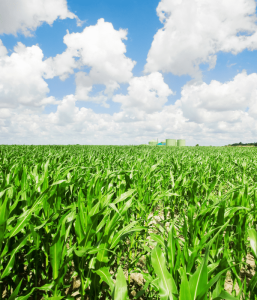Anaerobic digestion and the local environment
Anaerobic digestion plants are some of the most well known and instantly recognisable renewable energy solutions available – converting organic matter such as animal manure or grass into biogas that can be strubbed and injected into the national grid to heat and power local homes. But what is the impact of anaerobic digestion on the local environment?
The impact of anaerobic digestion on the local environment
Waste management: anaerobic digestion relays on specific bacteria breaking down organic matter and creating something called biogas. Biogas is largely made up of carbon dioxide and methane and, once the CO2 is ‘scrubbed’ out of it to create biomenthane which can then be injected into the gas grid.
As such, anaerobic digestion is often used as a renewable and sustainable form of waste management for the local area – using animal waste from farms or waste water, for example, as feedstock – and therefore reducing & recycling local waste.
Odour management: related to the point above and part of the waste management solution, anaerobic digestion can also act as an odour management solution, especially in agricultural areas – reusing and recycling otherwise smelly waste and converting it into usable energy.
Renewable energy source: perhaps most prominently, anaerobic digestion plants provide renewable energy – heat & power via the national grid – to homes and businesses in the local area.
The biogas created from the process of anaerobic digestion is entirely renewable as the process is organic (explained above) and 1 anaerobic digestion plant can power thousands of homes in the surrounding area.
What’s more, the green carbon dioxide generated from the AD process can be captured and sold on for use in manufacturing and industry in exactly the same way as fossil fuel derived CO2 – providing yet another renewable energy source.
Additional income for farms/farmers: on-farm anaerobic digestion plants also serve to support local farmers, providing them with an additional income, over and above (and indeed complimentary to) their daily farming duties.
Biogas created from anaerobic digestion isn’t just pumped into the national grid, it’s sold into the grid, meaning that farmers can make an additional income from having an AD plant on their site.
What’s more, the byproduct created from the anaerobic digestion process – once treated – can be used as a nutrient rich crop treatment, supporting healthy growth.
In short, the impact of anaerobic digestion on the local environment is extremely positive!
To find out more about our anaerobic digestion construction services, please click here or contact us to discuss your next AD project.





